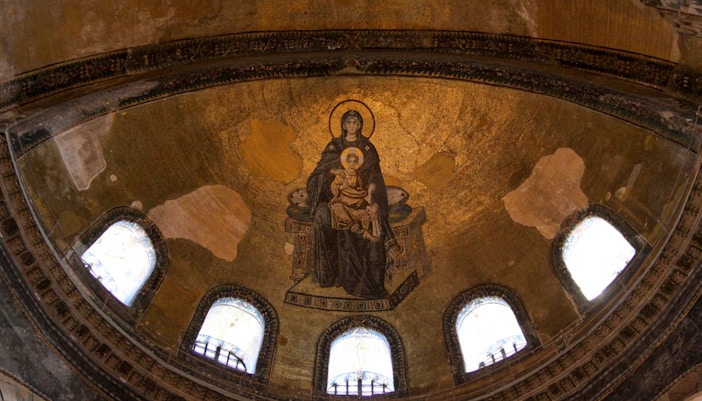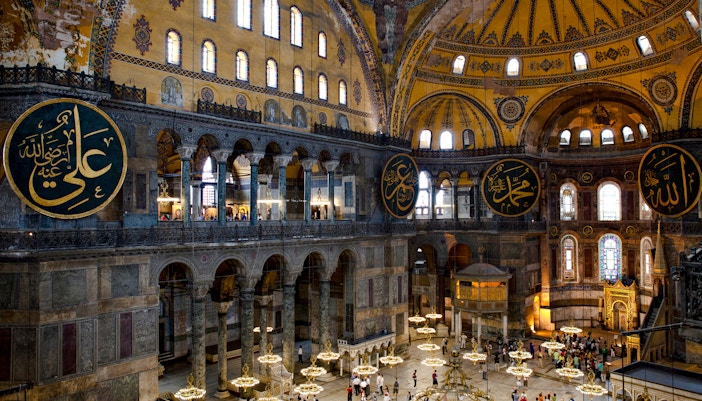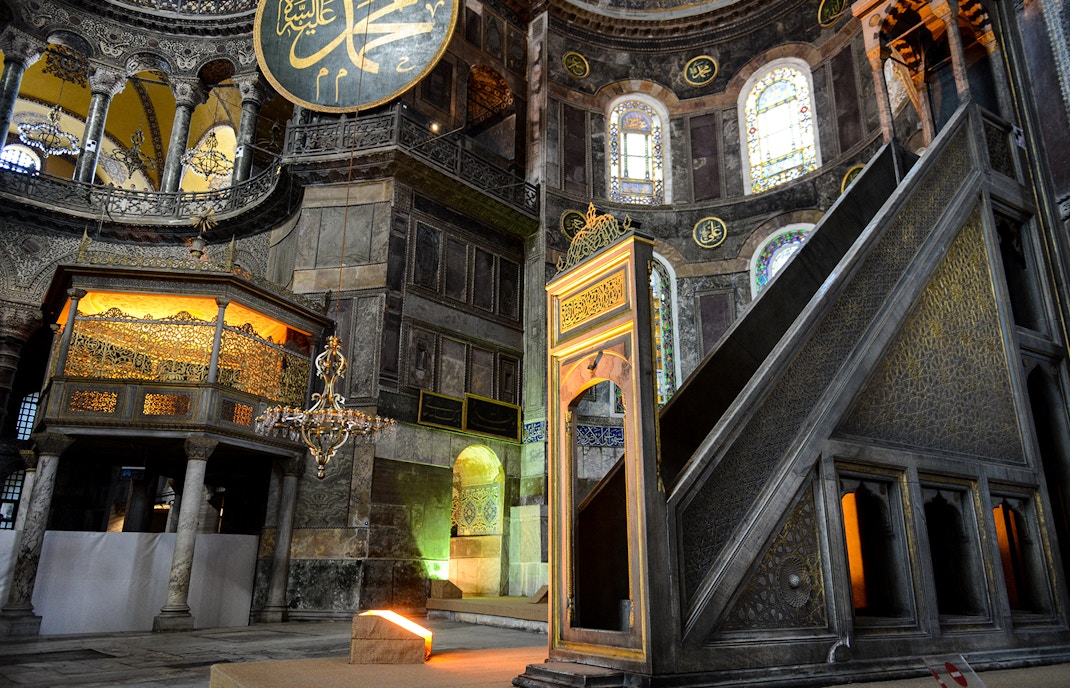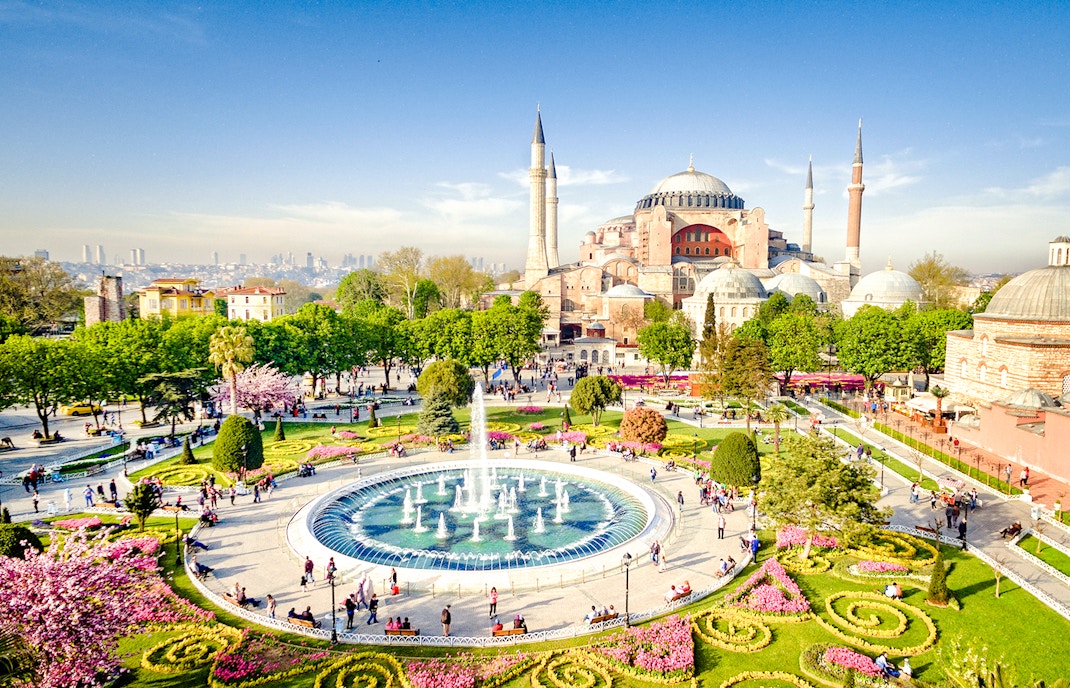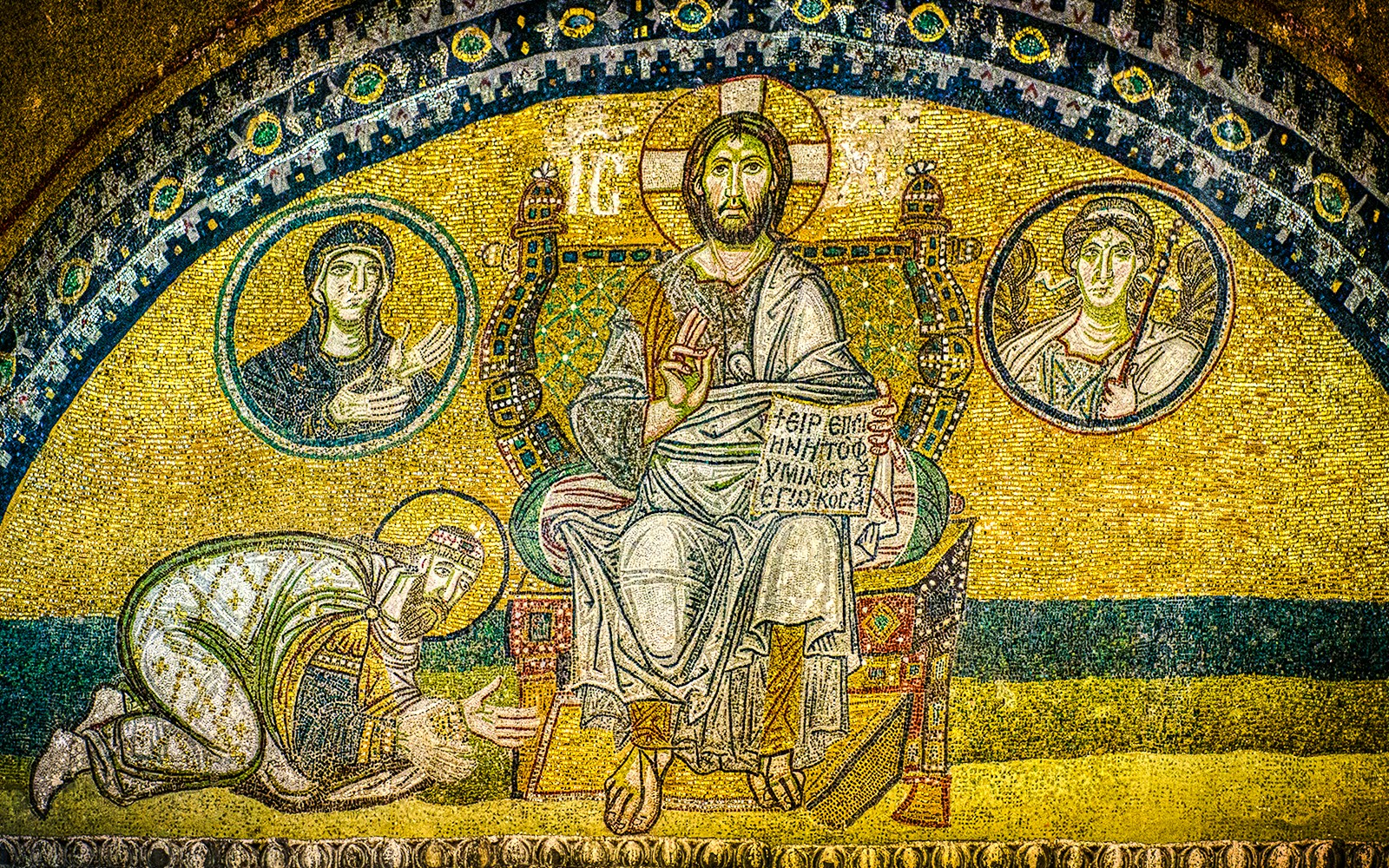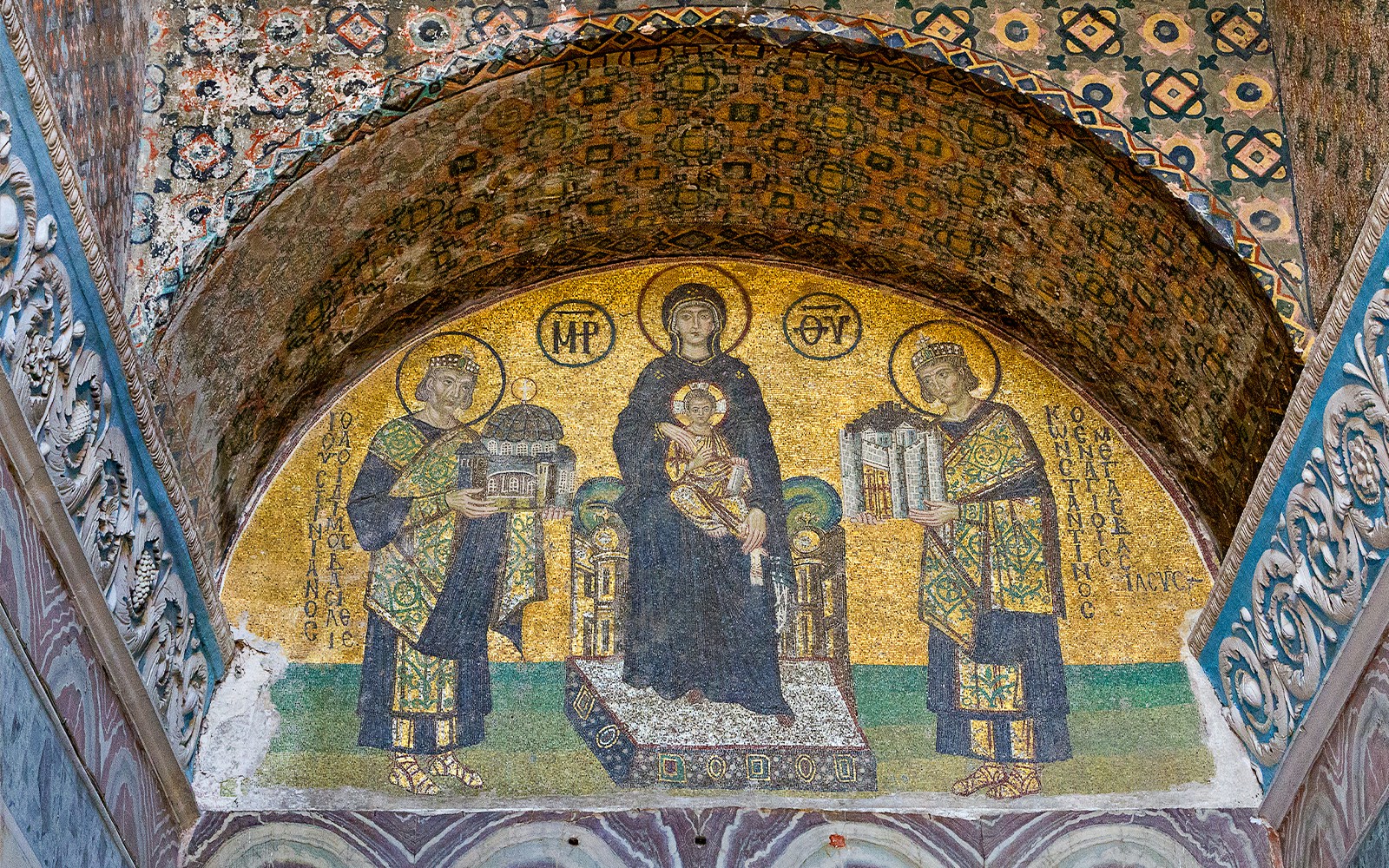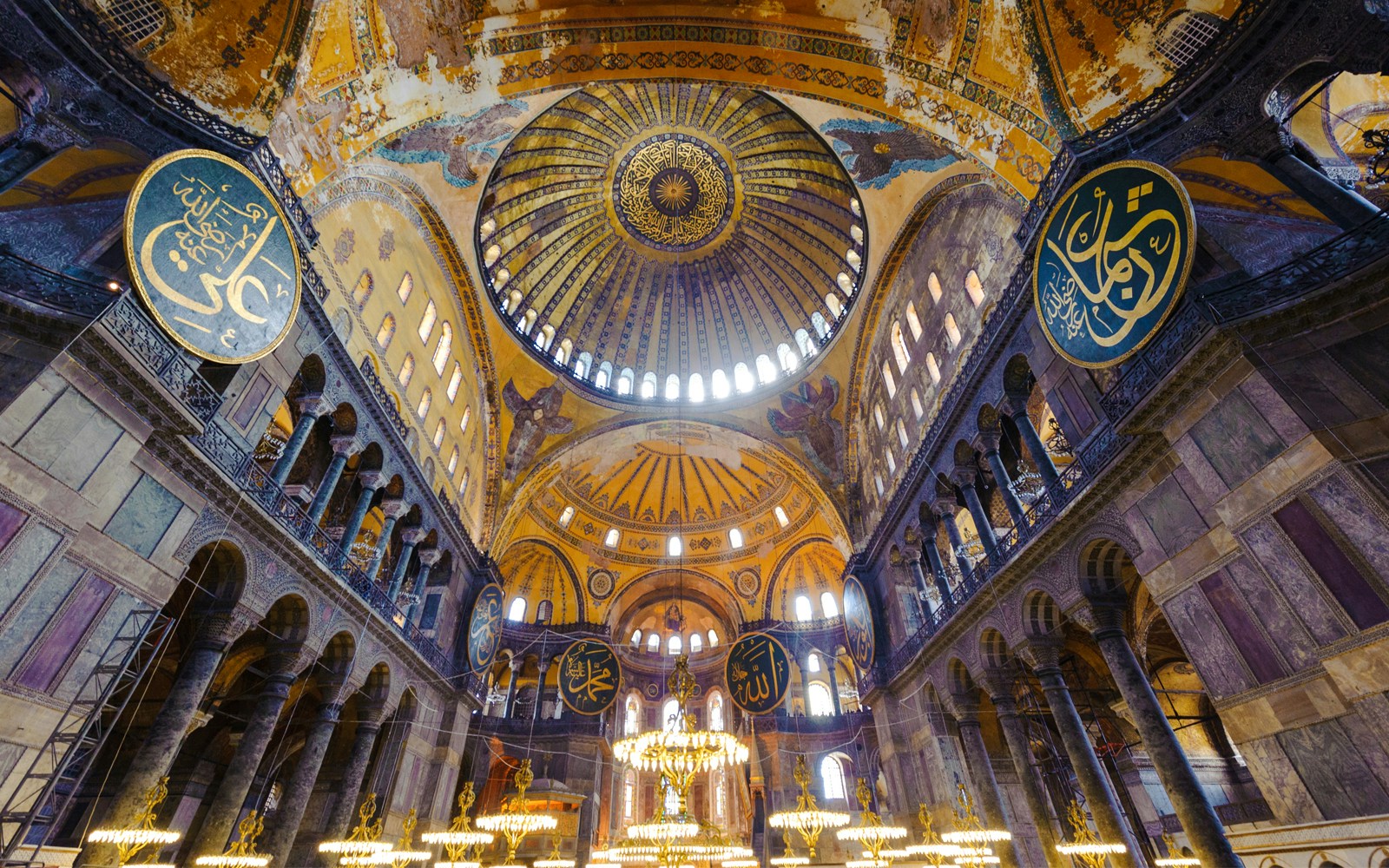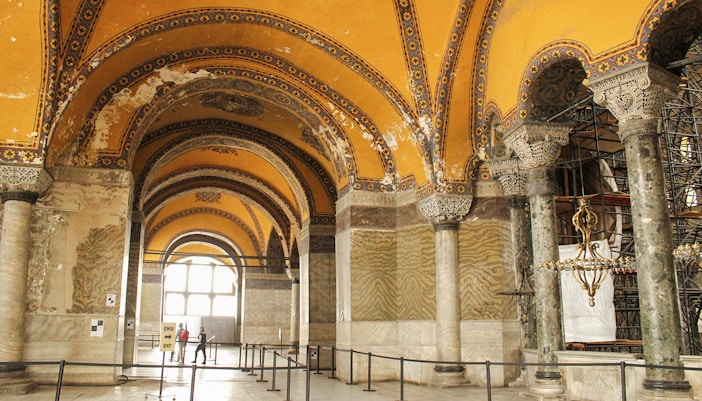- Hagia Sophia was originally known as Magna Ecclesia, meaning Great Church, because of its large dimensions.
- The monument is over 14 centuries old, first consecrated in 360 C.E. by Bishop Eudoxius of Antioch.
- The building was constructed using green marble from Egypt, yellow stone from Syria, and black stone from the Bosporus.
- It was destroyed twice during construction: first during the 404 C.E. riots, then during the Nika Uprising in 532 C.E.
- The columns of the monument were repurposed from the Temple of Artemis to adorn and enhance the interior.
- It took approximately 10,000 workers to complete Hagia Sophia’s dome!
Unique facts about Hagia Sophia Church

